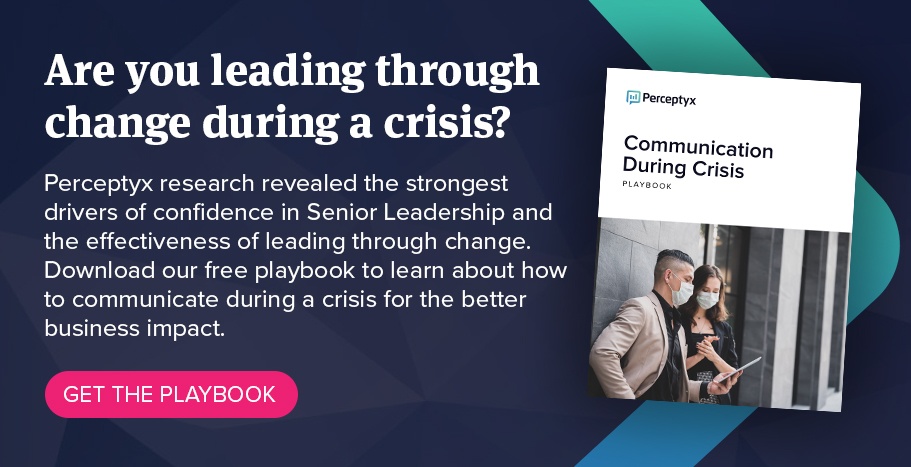COVID-19 has been a poignant reminder that change is constant, situations are fluid, and our lives can be upended rather quickly. While the pandemic and its impact may not be fully known, it’s important that we reflect on some critical lessons learned from organizations who stayed in close contact with their employees that will help shape how we work and live in the foreseeable future.
Flexibility is paramount
Employees continue to be impacted by the pandemic differently as a result of their family situation, health, age, ethnicity, physical location, and a myriad of other factors. As such, a “one size fits all” corporate policy that relates to how, when, and where employees work is no longer relevant or able to meet the evolving needs of a diverse workforce.
Prior to the pandemic, many organizations were apprehensive about allowing their employees to work remotely, believing that productivity would undoubtedly suffer outside of a physical workspace. By contrast, in this new world of work, employees view remote work as integral to their ability to balance their work and personal lives. The concept of “working at home” has shifted to “living at work.” As such, the vast majority of employees who used to work exclusively in a physical workplace now prefer to work remotely or in a mixed environment to better meet their needs.
Moreover, employees proved themselves to be productive and effective when working remotely and, as a consequence, expect to be afforded many of the same accommodations once it is deemed safe to return to their regular work environment. These accommodations will include the ability to work at the time and place of their choosing. This is not only critical given that the risks associated with the pandemic have not fully dissipated and that childcare and other family responsibilities remain, but also makes sound business sense, given the ability of employees to be effective in their roles outside of their normal work environment. No longer will some businesses have to fight the war for talent limited to a small radius around headquarters – the boundaries of their global footprints will continue to blur.
Communication must be proactive, candid, and frequent
As organizations continue to welcome employees back to their regular places of work, they will need to ensure that employees are well informed of their options and the steps that leaders are taking to keep them safe, connected, and engaged. These policies should be well defined and ensure, among other things, that employees can stay home in the event they or someone they care for is unwell, without fear of negative consequences.
The pandemic reminded us that meaningful events can drastically shape the employee experience and ultimately impact how employees view their organization and its brand. Leaders will need to ensure that they have a pulse on what’s important to their workforce and are able to quickly turn employee feedback, concerns, and needs into action. While the coronavirus may be a “once in a lifetime” event, employees are sure to endure other disruptions in the future, which highlights the need to be able to collect, analyze, and share information in near real time.
Collaborative technology is no longer a “nice to have” option
The technology that was quickly leveraged in support of the migration toward remote work is here to stay. Organizations will need to continue to ensure that their employees have access to the tools needed to perform meaningful work in a seamless and collaborative way. For some organizations, this may require accelerating implementation timelines and providing additional training and IT resources for employees. Regardless of the approach, it will be increasingly vital for organizations to continue to invest in technology to bring employees together, foster collaboration, and provide a sense of connectedness despite the physical divide.
Double down on support provided
As employees’ personal situations and circumstances vary, so too does their well-being. The pandemic cast a light on the varying challenges of many and their sources of worry – financial stability, physical / mental health, caregiving responsibilities, safety, discrimination in their communities.... It reminds us that while we are all impacted by adverse events, some will undoubtedly be impacted more than others and require personalized support from their organizations and managers.
Managers are the hinge of success
From meeting the diverse needs of a remote workforce to ensuring that employees remain connected, informed, and supported, we continually find that managers are the critical hinge to driving employee well-being, engagement, and retention. Managers who are able to demonstrate that they genuinely care about their employees and put their interests first are leading teams that continue to thrive during the disruption.
The way forward
As the impact of the pandemic continues to be realized, organizations will need to take further actions to prioritize the well-being of their employees. Organizations that take meaningful steps to accommodate their workforce, offer personalized support, and keep their teams motivated and connected will be better positioned to retain and engage their talent in the time ahead.
Join Perceptyx and HR leaders for interactive discussions on lessons learned through this turbulent season, and how organizations are using people analytics to adapt and navigate the road ahead. View all upcoming events and discussions here.

